Everything You Need to Know About Dolmabahce Palace: Istanbul’s Iconic Landmark
Dolmabahce Palace is one of the most magnificent buildings in Istanbul and is known as the place where Gazi Mustafa Kemal Atatürk, the founder of our country, spent his last days. This palace, which combines Western-style architecture with Ottoman aesthetics, was built by Sultan Abdulmecid during the modernisation process of the Ottoman Empire. Located on the shores of the Bosphorus, Dolmabahce Palace has been an important symbol since its construction. In addition to its historical significance, Dolmabahçe Palace is one of Istanbul's most important cultural heritages.
Every year on November 10, the palace attracts great attention to commemorate Atatürk's passing.
So, Where is Dolmabahce Palace? And how to visit Dolmabahce Palace?
Let's learn all about Dolmabahce Palace together👇
The Muayede Hall (Ceremony Hall)

The Muayede Hall is one of the most glamorous and magnificent parts of Dolmabahçe Palace. During the Ottoman period, this hall, where the sultan received the state officials on special occasions, was used as the most important ceremonial area of the palace.
During your visit, you can visit this impressive hall and take a closer look at its high ceiling, gigantic chandelier and furniture adorned with eye-catching details.
Source: X
Süfera Hall (Hall of Ambassadors)

Süfera Hall is one of the special sections of Dolmabahçe Palace where foreign ambassadors and ambassadors were hosted. This hall, which attracts attention with its flamboyant decoration, elegant furniture and impressive ornaments, hosted the diplomatic ceremonies of the palace.
You can feel the official atmosphere of the palace more closely by exploring this magnificent area during your visit.
The Harem-i Hümayun (Haremlik)
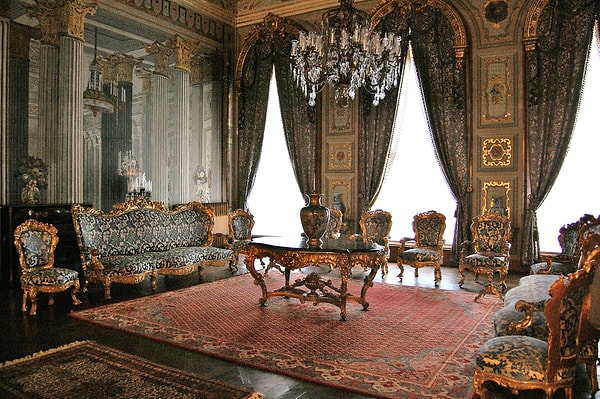
The Harem-i Hümayun is the area where the sultan lives with his family and is considered one of the most private parts of the palace. The harem, which has a simpler decoration compared to the other sections, was designed in this way to reflect the privacy and intimate life of the family.
Accessed through a long corridor, this section consists of interconnected rooms and bears important traces of Ottoman palace life.
The Mabeyn-i Hümayun (Selamlık)
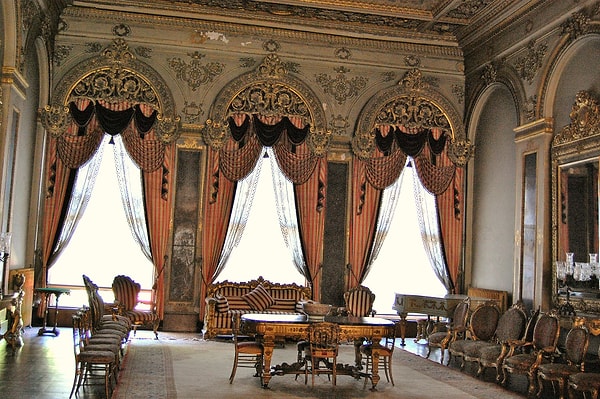
The Mabeyn-i Hümayun is one of the most important parts of Dolmabahçe Palace dedicated to state affairs. It is also known as the Mabeyn Chamber.
This area, where official meetings are held and the sultan receives the state officials, attracts attention with its elegant decoration and solemn atmosphere. As the administrative centre of the palace, Mabeyn witnessed the political life of the late Ottoman Empire.
Ataturk's Room
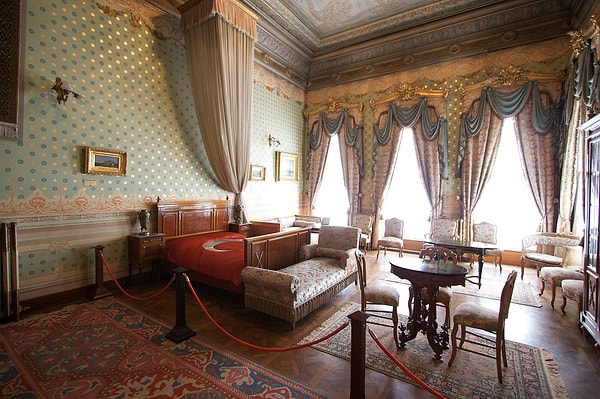
Ataturk's Room in Dolmabahçe Palace is one of the most meaningful and emotional points of the palace. This room, where the great leader Mustafa Kemal Atatürk passed away on November 10, 1938, is considered one of the most moving parts of the palace.
All the clocks in the room are set to 09.05, symbolising the moment Atatürk passed away. This simple but deeply meaningful room, whose bed is covered with a Turkish flag, offers visitors an atmosphere of respect and sadness with every detail. The window overlooking the Bosphorus allows visitors to share the view that Atatürk saw every day.
Dolmabahçe Palace Painting Museum
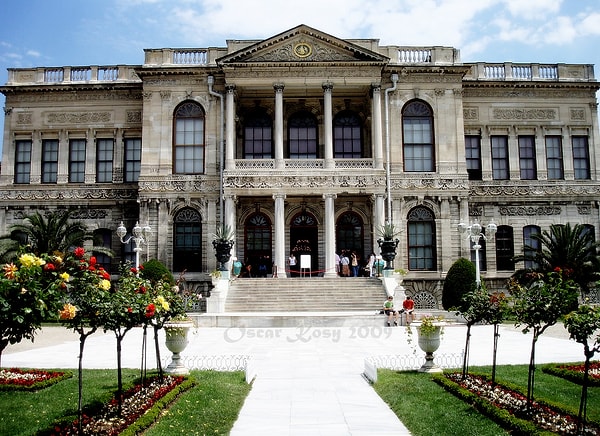
Located in the garden of the palace, this museum is a must-see stop. This museum, which houses the rich collection of Ottoman paintings, is quite comprehensive with approximately 553 works.
Painted between the 16th and 20th centuries, these works include sultan portraits, historical compositions and orientalist paintings. One of the most striking works in the museum is Félix-Auguste Clément's “The Hunt in the Desert”; it is also known as the largest orientalist painting in Turkey.
If you want to take a walk full of art accompanied by the Bosphorus view, you should definitely make time for this museum.
Dolmabahce Palace Visiting Hours and Entrance Fee
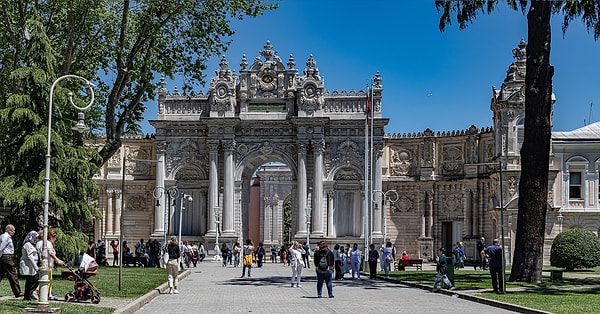
Dolmabahçe Palace spreads over an area of 45,000 square meters and includes 285 rooms, 46 halls, 6 baths and 68 toilets. You can visit the palace between 09.00 - 18.00 every day except Monday. The ticket offices close at 17.30, so it's worth planning your visit accordingly.
Dolmabahçe Palace entrance fees are as follows:
Selamlık Section: 90 TL
Harem + Selamlık Combined Ticket: 150 TL
Dolmabahçe Palace + Harem + Painting Museum Combined Ticket: 1500 TL
MuseumKart holders can only visit the Harem section for free.
How to get to Dolmabahce Palace?
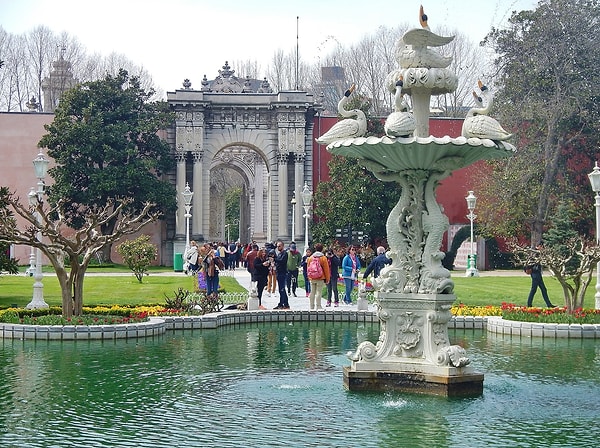
Dolmabahçe Palace is located in the Besiktas district on the European side of Istanbul. It is quite easy to reach the palace; you can choose the most suitable one from the different public transportation alternatives.
By subway: You can take the M2 Yenikapı-Hacıosman metro line and get off at Taksim station, then transfer to the F1 funicular line towards Kabataş. After getting off at Kabataş, you can reach the palace with a short walk.
By bus: Many bus lines run on the Beşiktaş or Kabataş route. You can get off at Beşiktaş and take a short walk to Dolmabahçe Palace.
By sea: If you are coming from the Anatolian side, you can take a ferry from Üsküdar or Kadıköy to Beşiktaş or Kabataş and then walk to the palace. It can be a pleasant transportation option, especially with the Bosphorus air.
Things to Remember When Visiting Dolmabahçe Palace

When visiting Dolmabahçe Palace, you can consider some small but effective tips to make your experience more enjoyable and productive:
Arrive Early: The palace attracts the attention of both local and foreign tourists throughout the year. By arriving early in the morning, you can start touring before the crowds form and avoid long ticket queues.
Prefer Guided Tours: Dolmabahçe Palace is impressive not only for its architecture but also for its historical and artistic details. A guided tour will give you a deeper insight into the history of the palace and the last days of Atatürk's life here.
Pay Attention to Photography Rules: Photography is prohibited in some parts of the palace. Therefore, take care to follow the photography rules during your visit; this way, your visit will not be interrupted and the historical structure will be respected.
Don't Forget to Take a Break: After visiting the Palace and the Painting Museum, you can relax at the Limonluk Café, which complements the historical atmosphere in the garden. In addition, Dolmabahçe Cafeteria, located against the Bosphorus, will be a nice option where you can relieve your tiredness with a peaceful view.
With these small suggestions, you can turn your visit to Dolmabahçe Palace into a fuller and more enjoyable experience.
Keşfet ile ziyaret ettiğin tüm kategorileri tek akışta gör!

Send Comment